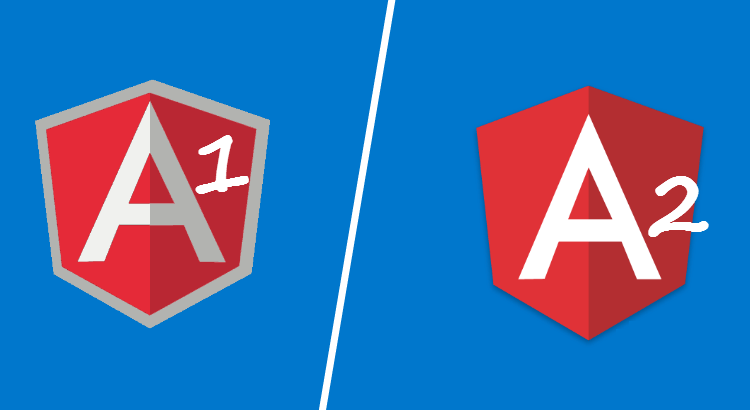
Recently, the beta version of AngularJS 2 was announced, claiming it has a number of essential changes compared to Angular 1. Indeed, being just a beta version, Angular 2 has already created a lot of buzz all around the community.
But, do you know the reason behind it?
Well, for starters, AngularJS 2 is written completely in TypeScript and meets ES6 (ECMAScript 6) specifications.
And according to the NG conference meetup, AngularJS 2 implements unidirectional tree-based ultrafast change detection and immutable data structures, meaning it is 5 times faster than AngularJS 1.
And just for your knowledge, it is not an update for AngularJS 1.
Angular 2 rewrote its entire framework to include essential changes.
Therefore, the better way to understand more about AngularJS 2 is to compare it with AngularJS 1.
In this article, we’re going to show the differences between Angular 1 and 2.
- Component-Based
Yes, AngularJS 2 is fully component-based. This means it will no longer use $scope and controllers, replacing them with directives and components.
However, these components are nothing but directives with a template.
What you need to remember while using components is that you also have to import them on the page..
- Bootstrapping in Angular 2
In Angular 1, you had 2 options to bootstrap Angular:
One uses the ng-app attribute, and the other uses code. But AngularJS 2 has said goodbye to the ng-app attribute. So, the only way to bootstrap Angular is via code.
Also, in AngularJS 2, the bootstrap function starts the parent component of your Angular application.
- Structured-Based Directives
The specification of the directives in AngularJS 2 has been significantly simplified. Although they’re still subject to change.
And AngularJS 2 now lets you declare directives with the @Directive annotation.
But the good news is, you can also use directives in components now..
This applies to predefined and its directives.
For instance, it is now possible to use the ‘hover’ and ‘NgFor’ directives in a component.
They will be imported initially; you can then make them recognizable in @view.
- Dependency Injection
The improved dependency injection model in AngularJS 2 has created many opportunities for object-based/component-based work. This improved dependency injection model consists mainly of 3 parts.
The Injector holds the required APIs to inject dependencies and make the dependency injection available.
Another is Bindings.
They allow naming the dependencies. Lastly, the objects of these dependencies.
The primary purpose behind their generation is that they can be injected at will n suitable places.
The injector view passes these objects to the component’s constructor.
- Data Binding
Those who have worked in AngularJS 1 know that the ng-model functionality makes it possible to edit a form and instantly have those changes updated on the JavaScript POJO.
But, to integrate 3rd party libraries, you often need the AngularJS module wrapper whenever the library event occurs.
So, the best thing in AngularJS 2 is that they introduced Zones, which you can compare to a thread-local context in Java.
This zone mechanism in AngularJS 2 has made the digest cycle no more necessary.
More to Come
Phew! Now, that’s a satisfying answer!
But note that most of the specifications are under the implementation process. This means you can’t develop the whole application in AngularJS 2 for now. However, on the bright side, it’s a great deal that the front end is ready. It comprises directives and components. Also, you’ll find it a lot easier to communicate with the database and use Web Sockets.
This combination of TypeScript with AngularJS 2 has opened new doors in the form of great opportunities in object-oriented programming in the front end.
With all these upgrades, it looks pretty promising. Maybe soon, it’ll change the way we develop front-ends entirely.
Recommended Reading:
- 10 Reasons To Choose AngularJS Framework!
- Why should you Go For AngularJS 2?
- Key Benefits of AngularJS Framework!
AboutManthan Bhavsar
Related Posts
Node.js is The Most Preferred Real-Time Applications Development Platform – Here’s Why?
Gone are those days when enterprises such as mobile app and website development companies were tied with limited programming...
This Is Why You Should Hire Dedicated Development Team For Your Next Project
Just think about how much easier and quicker things would be if a group of individuals was organized into a single unit...

